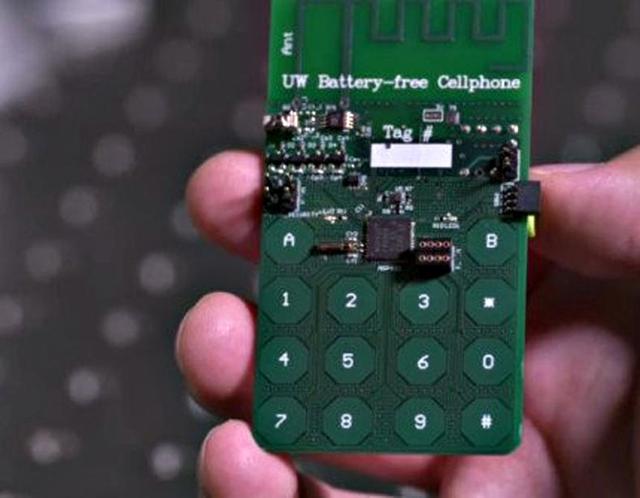This is Scientific American — 60-Second Science. I'm Christopher Intagliata.
A dying battery is a huge annoyance for cell phone users. But for engineers? It's inspiration. "Can we design a smartphone which can make a phone call and have a conversation without the need for any kind of battery?"
Shyam Gollakota is a computer scientist at the University of Washington. And he and his team have indeed designed a battery-free phone. It looks like a circuit board, with touch-responsive numeric buttons. And it runs on just a few microwatts of power, which it harvests from light, and from the radio signals emanating from a nearby wireless base station.
The team achieved the battery-free, energy-efficient design by ditching two of power-hungry features of modern cell phones. One, the test unit skips digital to analog conversion. And two, it does not generate its own wireless signals to make calls.

Instead, in receiving mode, it absorbs incoming radio waves from the base station, and converts them directly into vibrations of its speaker. In sending mode, it uses the vibrations of its onboard microphone to change the way radio waves are reflected back to the base station.
And it worked, to make a Skype call: <"hello?">
The findings appear in the Proceedings of the Association for Computing Machinery on Interactive, Mobile, Wearable and Ubiquitous Technologies.
The demo device does have limitations: It can only stray 50 feet from the base station. The voice quality is pretty lo-fi. And you can't check Facebook either—yet. "Oh,
And it's those other operations that will ultimately be crucial. Because, battery or not, you could argue that voice calls are by now just a neat retro feature of our ever-smarter phones.
Thanks for listening for Scientific American — 60-Second Science Science. I'm Christopher Intagliata.











